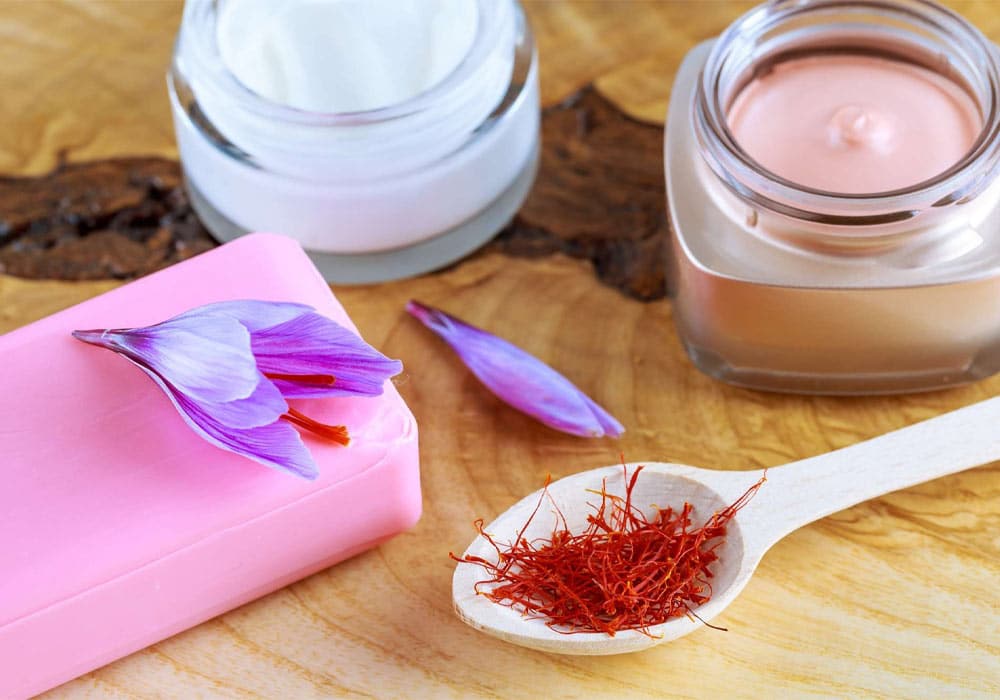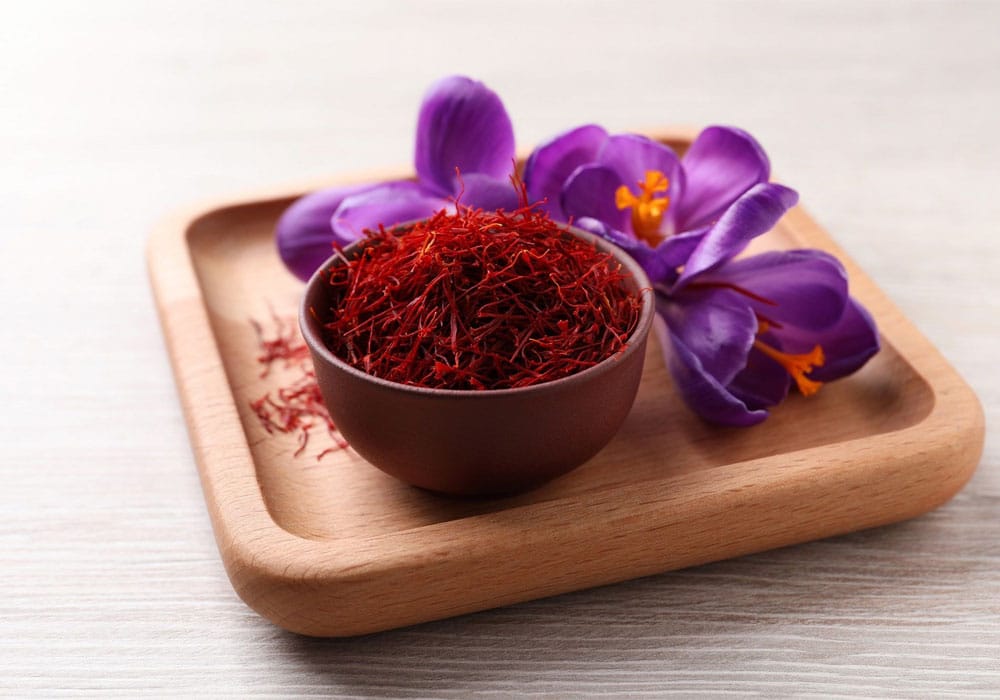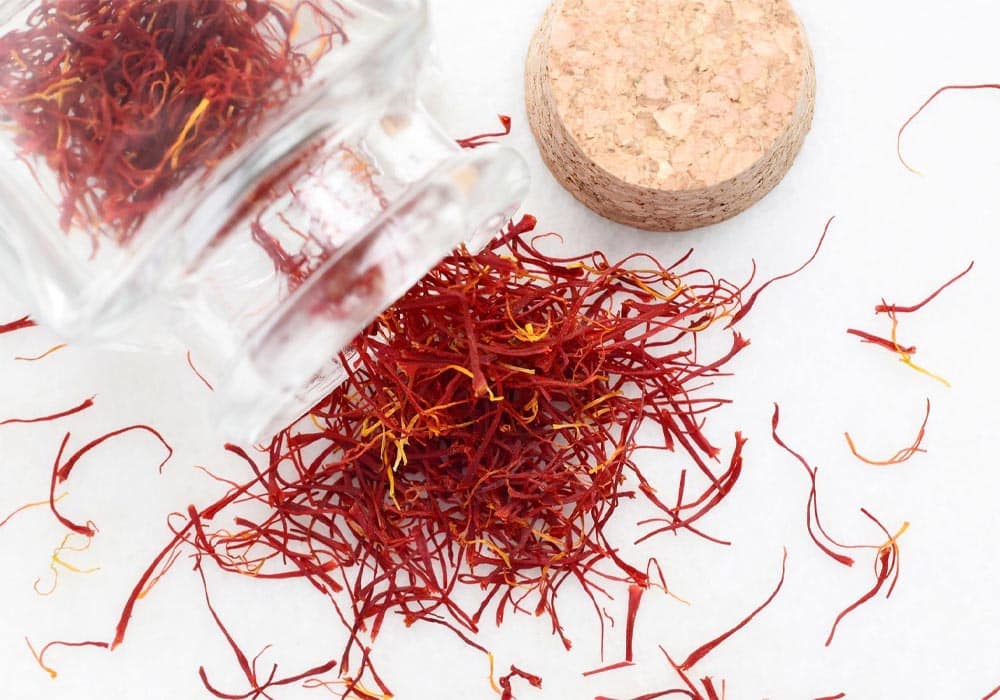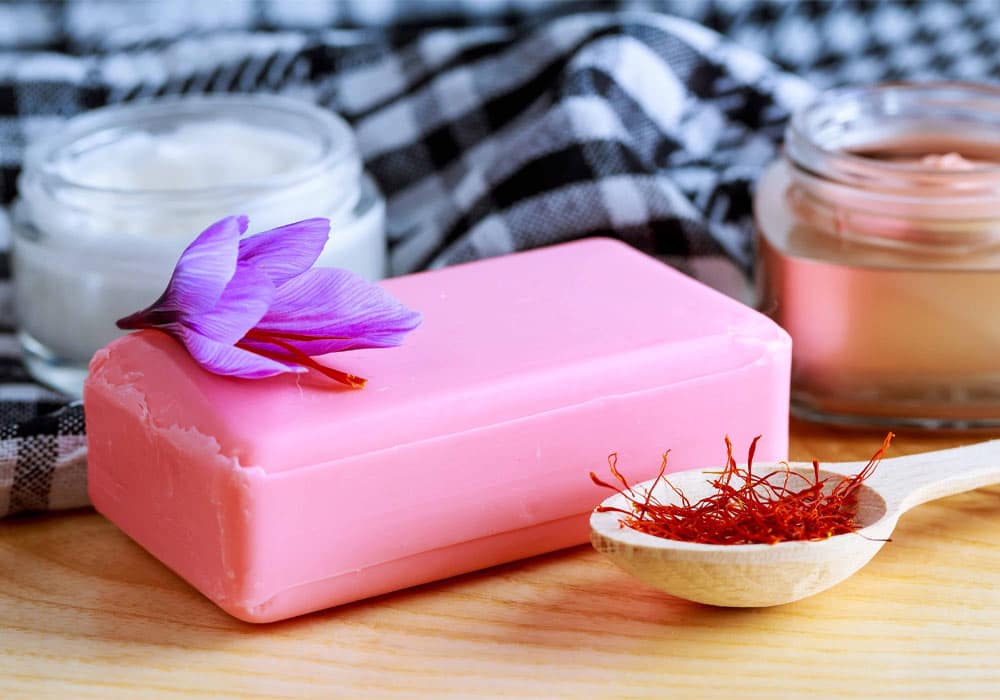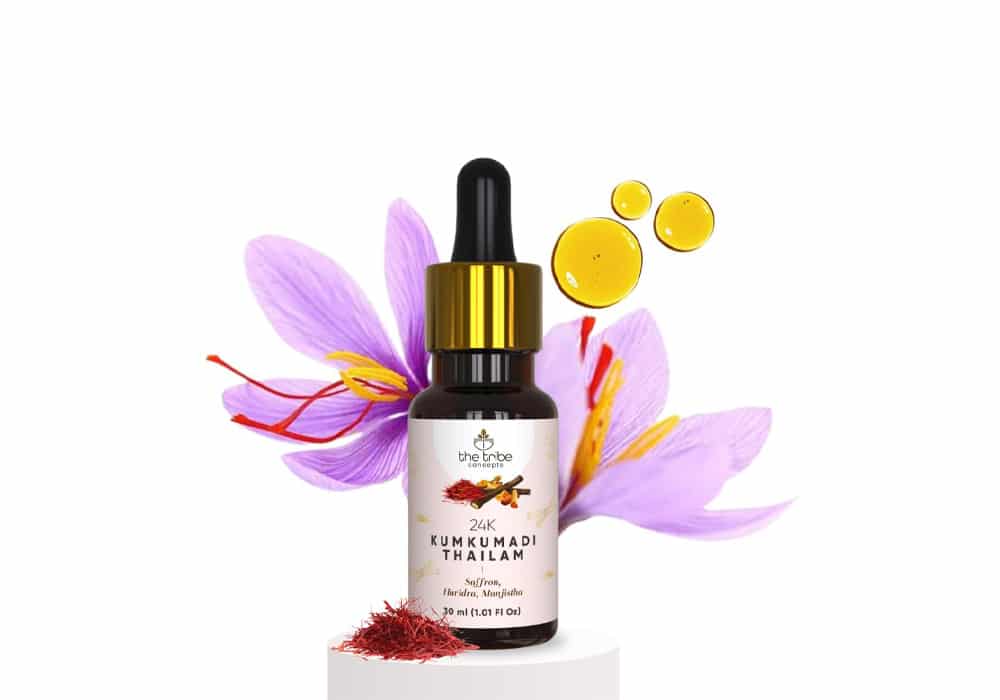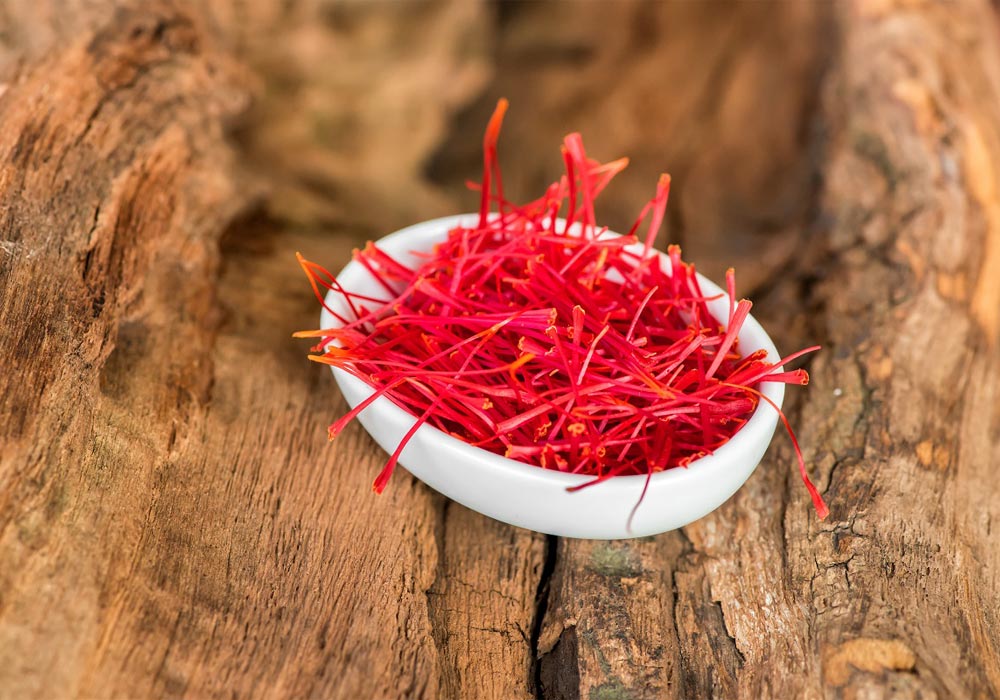Saffron, the golden and precious spice derived from the stigmas of the Crocus sativus flower, has been used for centuries in traditional medicine, culinary arts, and pharmaceuticals. With the growing consumer preference for natural, organic, and chemical-free products, the cosmetics and personal care industry has increasingly turned to the power of medicinal plants. Among them, saffron stands out for its potent active compounds—crocin, safranal, and polyphenols—earning a special place in the formulation of skincare and haircare products.
Active Compounds in Saffron
The therapeutic and cosmetic properties of saffron stem from its unique chemical composition. Crocin, the main pigment in saffron, is a powerful antioxidant that helps protect the skin from free radicals. It also stimulates collagen production, contributing to skin rejuvenation.
Crocetin, another component, has anti-inflammatory effects and promotes blood circulation, improving skin tone and texture. Picrocrocin, responsible for saffron’s bitter taste, offers antiseptic properties that aid in skin purification. Safranal, the aromatic compound in saffron, provides calming, antidepressant, and antibacterial effects, making it a valuable ingredient in skincare and haircare formulations.
Additionally, the presence of plant-based compounds like flavonoids and polyphenols boosts saffron’s protective role against sun damage, pollution, and oxidative stress, making it a highly effective ingredient in natural beauty products.
Applications of Saffron in Cosmetic and Personal Care Products
Thanks to its extraordinary natural properties and active ingredients, saffron has become a valuable and versatile agent in the beauty and personal care industry. Its use in skin and haircare products offers a wide range of benefits, including brightening, anti-inflammatory, and anti-aging effects. Below are the key applications of saffron in cosmetic products:
Facial Masks
Saffron face masks—both homemade and commercial—are very popular. These often combine saffron with milk, honey, or clay to cleanse pores, reduce dark spots, and brighten the complexion. Weekly use can significantly enhance skin tone and texture.
Anti-Spot and Brightening Creams
Saffron-infused creams are ideal for treating sunspots or uneven skin tone. These creams offer a safer alternative to chemical brighteners like hydroquinone, using natural compounds to lighten skin effectively.
Anti-Aging and Firming Serums
Saffron serums penetrate deeply into the skin and help stimulate skin cell regeneration. Used mainly as night care, these serums assist in tissue repair and firming the skin.
Shampoos and Hair Masks
Herbal shampoos containing saffron are used to prevent hair loss, strengthen follicles, and improve hair shaft quality. Saffron hair masks nourish damaged hair and boost its natural shine.
Soaps and Facial Cleansers
Saffron-based soaps not only cleanse the skin but also reduce blemishes, soothe sensitive skin, and prevent dryness. These products are usually sulfate- and paraben-free, making them ideal for sensitive skin types.
Lipsticks and Tinted Lip Balms
In natural lip products like balms and tints, saffron is used both as a natural colorant and a moisturizer. These not only give a natural hue but also help prevent chapping and dryness.
Benefits of Saffron for Skin and Hair
Saffron’s active ingredients and therapeutic properties make it a powerful natural agent for maintaining healthy, radiant skin and hair. Here’s a closer look at its main cosmetic benefits:
Natural Skin Brightener
Saffron helps inhibit tyrosinase, the enzyme responsible for melanin production—the pigment behind dark spots and uneven skin tone. Regular use of saffron-infused products helps reduce sunspots, hormonal pigmentation, and age-related discoloration, resulting in brighter, clearer, and more even-toned skin.
Anti-Acne and Antibacterial
Saffron’s antibacterial and anti-inflammatory properties are particularly effective against acne and skin irritation. It targets acne-causing bacteria and helps regulate sebum production, reducing breakouts and preventing future flare-ups. Combining saffron with honey or tea tree oil in masks can enhance its cleansing power.
Anti-Aging and Rejuvenating
One of saffron’s most significant advantages is its anti-aging effect. Its rich antioxidants combat free radicals, slowing down skin aging. It also stimulates collagen synthesis, enhancing skin elasticity and reducing fine lines and wrinkles. Anti-aging creams and serums with saffron make skin appear firmer, smoother, and more youthful.
Moisturizing and Nourishing
Naturally hydrating, saffron—especially when paired with jojoba oil, milk, or honey—can deeply nourish the skin and alleviate dryness or roughness. This is especially beneficial for dry or sensitive skin types. Saffron-based moisturizers and masks improve skin softness and suppleness.
Hair Growth and Anti-Hair Loss
Saffron isn’t just good for skin—it’s also a boon for hair health. By increasing blood circulation to the scalp, it helps nourish hair follicles, encouraging hair growth and reducing hair fall. Saffron-infused shampoos and oils can also combat dandruff and improve scalp hydration. Regular use leads to fuller, healthier hair.
Challenges and Limitations
-
High Cost: Saffron is one of the most expensive spices, which increases the final cost of products.
-
Instability of Active Compounds: Saffron’s active ingredients are sensitive and require advanced extraction and preservation technologies.
-
Adulteration: The presence of fake or low-quality saffron in the market can compromise product efficacy.
-
Need for Regular Use: To achieve visible results, consistent long-term use is necessary.
Future Outlook
With rising demand for natural beauty products, saffron is expected to play an even larger role in cosmetics and personal care. Technological advances in the extraction and stabilization of active compounds, as well as the growth of local and international brands, will likely expand the market for this valuable ingredient.
Countries like Iran, the world’s largest saffron producer, have enormous potential to lead the development of saffron-based beauty products—both scientifically and economically.
Tida Saffron: A Trusted Supplier of Pure Saffron for Beauty Products
Tida Saffron, a well-established supplier of pure, high-quality saffron, is considered one of the most reliable sources for saffron in the cosmetics and personal care industry. By adhering to strict hygiene standards and preserving saffron’s natural properties, Tida delivers products rich in active compounds such as crocin and safranal.
Despite fluctuations in the price of Iranian saffron, Tida has succeeded in offering high-quality saffron at competitive prices, enabling beauty brands to create effective, natural products with brightening, anti-inflammatory, and anti-aging properties. With a guarantee of authenticity and professional service, Tida Saffron is a trusted partner for success in today’s competitive beauty market.
Conclusion
Saffron, the golden spice derived from Crocus sativus, has carved out a unique niche in modern skincare and beauty. With potent compounds like crocin, safranal, and polyphenols, saffron provides brightening, anti-aging, anti-inflammatory, and hydrating effects, making it a high-value ingredient in personal care.
From facial masks and creams to serums, shampoos, and soaps, saffron-based products deliver real results for healthier, more radiant skin and hair. While the high cost of Iranian saffron remains a challenge, reliable suppliers like Tida Saffron help manufacturers create high-standard, natural, and effective beauty products.
Overall, saffron’s unique properties and diverse applications make it a key player in the growing market for natural cosmetics, with a bright future ahead.
You may also like:


